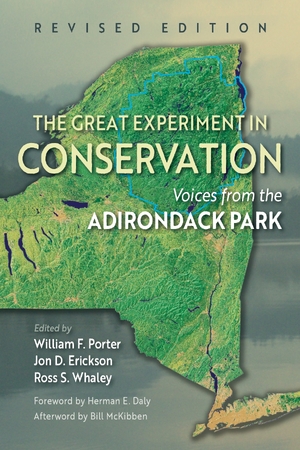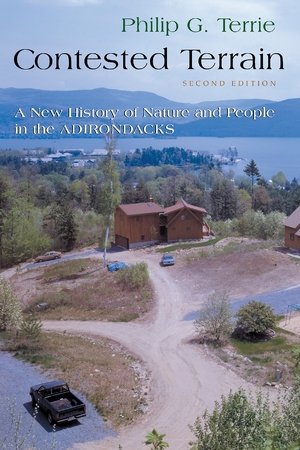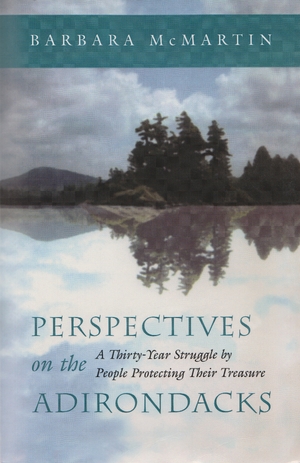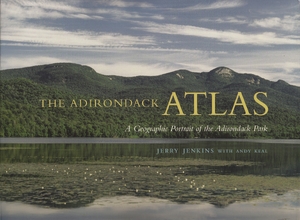"I’d love to see this important book be required reading for every New York State legislator and opinion-maker. Alive with personal voices, it is also packed with vital information and at times justifiably angry at what we human beings have done to the Adirondacks. It reminds us of what we’ve lost, of what we can still save, and of what a rare treasure this extraordinary region is."—Adam Hochschild, Pulitzer Prize–winning author of King Leopold’s Ghost: A Story of Greed, Terror, and Heroism in Colonial Africa
Description
The Adirondack region of New York State is, in many respects, America’s cauldron of conservation. It was there, more than a century ago, that wanton exploitation of forests first aroused concern about human impact on the environment. It was there that Americans first began to set aside lands proclaimed as “forever wild.” The establishment of the Adirondack Park created an immense landscape of 6 million acres composed of a mixture of public and private lands in nearly equal proportion. This unprecedented blend of human communities within wild lands makes the Adirondack Park perhaps one of the greatest case studies in conservation and development in U.S. history.
Representing a remarkable achievement in environmental scholarship and drawn from decades of research, The Great Experiment in Conservation captures the wisdom born of the last thirty years of the park’s evolution. The editors bring together leading scholars, activists, and practitioners—those who know the Park’s origin and the realities of living in a protected area—to narrate this history. Organized into three sections, contributors explore the ecological, cultural, and economic aspects of the region, drawing lessons from successes and failures as they struggle to find the right balance of private interests and public controls. With keen insight and deep passion, the authors reveal the Adirondack Park’s rich natural and cultural history in shaping conservation policy, providing vital contributions to the future study of land preservation.
Contributors include: Herman Daly, Bill McKibben, Barbara McMartin, Philip G. Terrie, Amy Vedder, and Bill Weber.
Table of Contents
Foreword: Connecting Means and Ends in the Study of Place
Herman E. Daly
Introduction: The Cornerstones of Conservation
Ross S. Whaley, Jon D. Erickson, and William F. Porter
Part one | Foundations of the Adirondack Ecosystem and Economy
Introduction: A Dark Spot in a Sea of Lights
William F. Porter
1. Geology of the Adirondack Mountains: Like an Egg with Its Major Axis to the North
James McLelland and Bruce Selleck
2. Water Resources: The Unique Adirondack Aquascape
Christopher P. Cirmo
3. Soils of the Adirondacks: Out of Site, Out of Mind
Russell D. Brigg
4. Upland Forests of the Adirondacks: Reflections of Soils and a Record of Disturbance
Charles D. Canham
5. Fish and Wildlife Communities of the Adirondacks
Roland W. Kays and Robert A. Daniels
6. Wildlife Exploitation in the Adirondacks From Beavers to Biodiversity
William F. Porter
7. Mining the Adirondacks
James Mclelland and Bruce Selleck
8. Forestry in the Adirondacks: An Economy Built on a Handful of Species
William F. Porter
9. Human Impacts from Afar: Acid Rain and Mercury Deposition in the Adirondacks
Charles T. Driscoll, Kimberly M. Driscoll, Myron J. Mitchell, Dudley J. Raynal, and Karen M. Roy
10. Recreation and Tourism in the Adirondacks
Chad P. Dawson
11. Great Camps and Conservation
Craig Gilborn
12. Development Rates and Patterns in the Adirondacks: Paradise Lost
Peter Bauer
13. Wildlife for a Wilderness: Restoring Large Predators in the Adirondacks
Rainer H. Brocke
Part Two | Institutions and Management of the Adirondacks
Introduction: The Park in Perspective
Jon D. Erickson
14. Cultural History of the Adirondack Park: From Conservation to Environmentalism
Philip G. Terrie
15. Legal Structure and Defense of the Adirondack Park
Robert Malmsheimer
16. Public and Private Land-Use Regulation of the Adirondack Park
William F. Porter and Ross S. Whaley
17. The Early Years of the Adirondack Park Agency
George D. Davis
18. The Evolution of the Department of Environmental Conservation
Stuart Buchanan
19. A Land Not Saved
Robert Glennon
20. Top-Down Regulation and Local Economic Autonomy
John Penney
21. Lessons from the Commission on the Adirondacks in the Twenty-First Century
Ross S. Whaley
22. A Perspective from the Forest-Products Industry
Roger Dziengeleski
23. Reflections on the Adirondack Park Agency in the Current Era
Richard H. Lefebvre
Part three | Many Voices, Many Opinions
Introduction: Visions for the Adirondacks and Beyond
Ross S. Whaley
24. Compromise, Continuity, and Crisis in the Adirondack Park: Shortcomings and Opportunities in Environmental Protection
Philip G. Terrie
25. Renewing Adirondack Park Mission Through an Educational Forest Preserve: Shortcomings and Opportunities in Wilderness Preservation
David Gibson
26. The Role of the People in Wilderness Preservation: Shortcomings and Opportunities in Governance
Barbara McMartin
27. Public Opinion and Public Representation: Strategies in Bio-Regional Development
Jon D. Erickson, Graham L. Cox, Anne M. Woods, and William F. Porter
28. The Adirondack Association of Towns and Villages: Strategies in Local Governance
Dean Lefebvre
29. The Adirondack North Country Association: Strategies in Economic Development
Terry Defranco Martino
30. The Adirondack Environmental Nongovernmental Organizations: Strategies in Conservation
Graham L. Cox
31. Envisioning the Future of Wilderness: Public Demands and Private Lands
Elizabeth Thorndike
32. Toward a New Wilderness Paradigm for Adirondack Park: The View from Bear Mountain
Rainer H. Brocke
33. Can Such a Noble Endeavor Succeed? Alaska and the Adirondack Park
Donald Behrend
34. The Adirondack Park in Global Perspective
Bill Weber and Amy Vedder
Conclusion: The Adirondack Experiment in a Full World
Jon D. Erickson, William F. Porter, and Ross S. Whaley
Afterword: Living Within Limits
Bill McKibben
About the Author
William F. Porter is professor of wildlife ecology and director of the Adirondack Ecological Center at SUNY ESF.
Jon D. Erickson is associate professor of ecological economics at the Rubenstein School of Environment and Natural Resources, faculty of the Environmental Program, and fellow of the Gund Institute for Ecological Economics at the University of Vermont.
Ross S. Whaley is emeritus president and professor of SUNY ESF. He is former chairman of the Adirondack Park Agency and served on the Governor’s Commission for the Adirondacks in the Twenty-First Century.
May 2025




